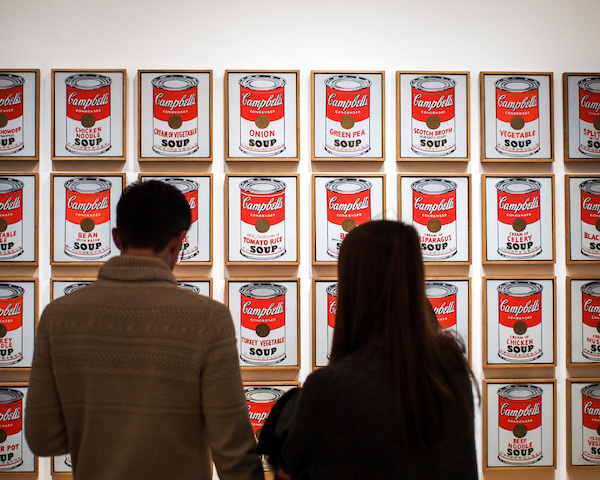Andy Warhol’s Long-Lost Digital Artworks Raise Doubts After Being Sold As NFTs
By Alexa Heah, 24 May 2021

Image via Luke W. Choi / Shutterstock.com
Who knew famed artist Andy Warhol tried his hand at digital artworks too?
According to Artnet News, artist Cory Arcangel and a team of experts from Pittsburgh’s Carnegie Mellon University recovered “lost” digital images from Warhol’s personal computer, which were created in the mid-80s using a software called ‘ProPaint’ that was never actually released.
Though the artworks were stored in an obsolete film format in floppy disks, the team was able to recover the files and share them with the world.
Now, auction house Christie’s New York has put up the digital images for auction as NFTs, with the sale scheduled to conclude on May 27. Proceeds will go towards the Andy Warhol Foundation to fund its grant program, which helps support artists affected by the COVID-19 pandemic.
Among the five works for sale are two self-portraits of the artist, along with images of a banana, flower, and Warhol’s signature Campbell Soup Cans. Winning bidders will receive a 4,500 by 6,000-pixel TIF image, and here’s where the controversy comes in.
With such a large file size, each image would be approximately 27 megabytes each. However, the original files were recovered from only 1.4-megabyte floppy disks.
Golan Levin, director of the Frank-Ratchye STUDIO for Creative Inquiry at Carnegie Mellon University, has taken to Twitter to question the authenticity of the NFTs.
“I’m concerned that your collectors might be confused about what they’re bidding on—since you’re not auctioning the originals, which were created at 320x200 [pixels],” Levin tweeted to Christie’s.
Levin posited that Christie’s was auctioning second-generation near-copies, which were reportedly upscaled to 6,000 x 4,500 pixels by a student at Carnegie Mellon University due to the Foundation wanting a larger size.
The Foundation has denied that it requested higher resolution images.
“The original drawings are not for sale; each of the five NFTs points to a restored and preserved file, which retains all of the artistry of Warhol’s Amiga compositions in a digital file format that can be accessed by modern computers,” the Foundation’s Director of Licensing, Marketing, and Sales Michael Dayton Hermann, told Artnet News.
Are they or aren’t they – the verdict is still out.
When we presented these Warhol Amiga works in @CreativeInquiry's 30th anniversary exhibition (2019), per contract with @thewarholmuseum, we compromised: we displayed unscaled 320x200 PNGs, served from a modern PC, via analog composite video, on an authentic 1985 Amiga monitor. pic.twitter.com/golIzD5JyY
— Golan Levin (@golan) May 20, 2021
Dear @ChristiesInc @gcerutti: As you advertise the authenticity of Warhol's "five original drawings" on the NFT blockchain, I'm concerned that your collectors might be confused about what they're bidding on—since you're not auctioning the originals, which were created at 320x200.
— Golan Levin (@golan) May 20, 2021
The versions you're auctioning—with dimensions of 6000x4500—are altered, 2nd-generation near-copies. Specifically, these were upscaled from the originals by @cl0x per the specific request of @warholfdn, because the Foundation explicitly wanted the artworks "in high resolution".
— Golan Levin (@golan) May 20, 2021
[via Artnet News, images via various sources]





